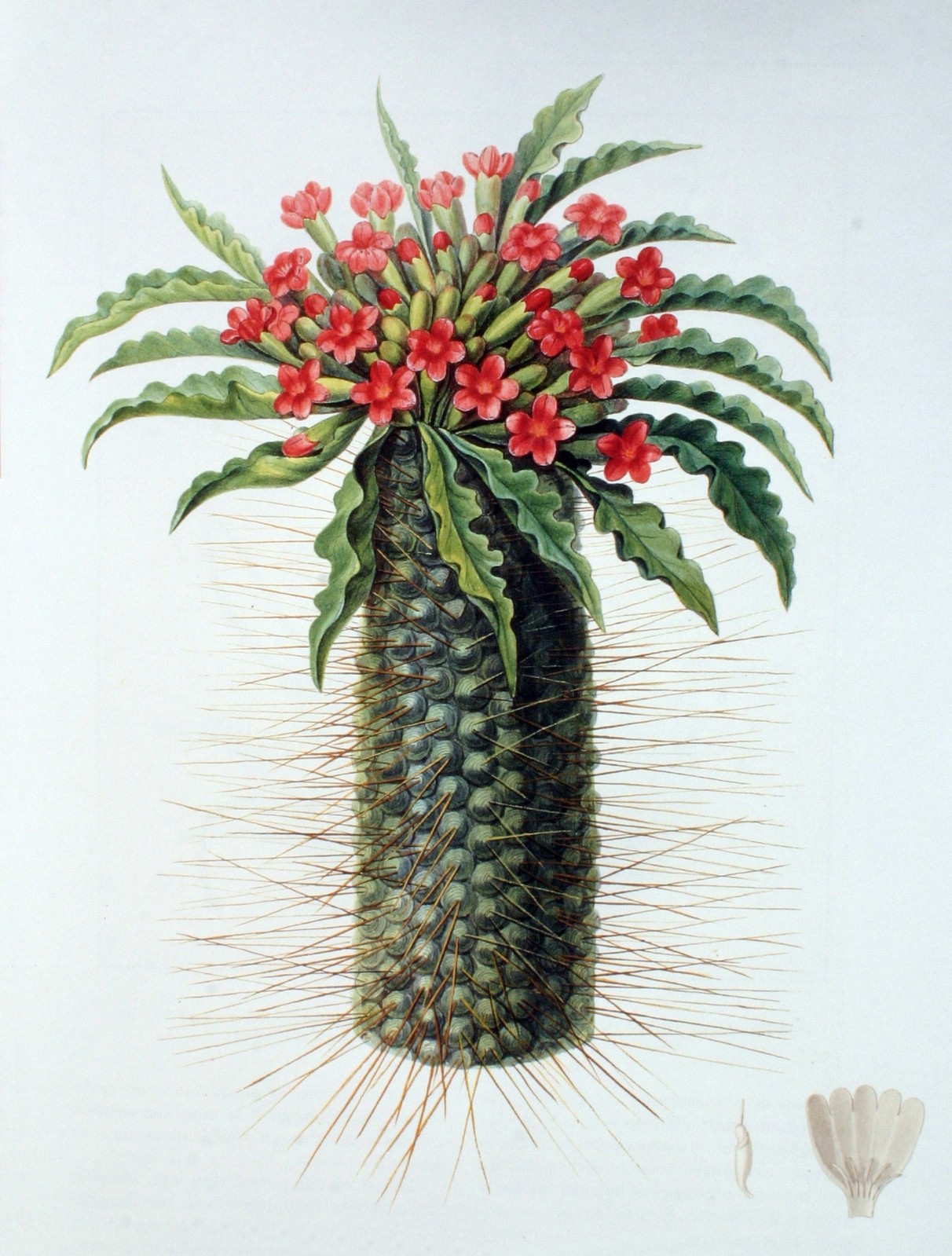- Pachypodium namaquanum
Taxobox
name = "Pachypodium namaquanum"
status = LR/nt
status_system = IUCN2.3

image_caption =
regnum =Plantae
divisio = Magnoliophyta
classis =Magnoliopsida
ordo =Gentianales
familia =Apocynaceae
genus = "Pachypodium "
species = "P. namaquanum"
binomial = "Pachypodium namaquanum"
binomial_authority = (Wyley ex Harv.) Welw.Pachypodium namaquanum (Wyley ex Harv.) Welw. is a succulent single-stemmed plant growing to 4 metres tall in the arid, rocky mountains of the
Richtersveld in theNorthern Cape and southernNamibia . The warty trunk, thickset at the base and tapering to the top, is densely covered in sharp spines. Where damaged, the trunk produces side-branches that immediately curve back to the vertical. while the very top of the plant is usually bent to the north, in the same way that "Copiapoa cinerea" (Cactaceae ) of theAtacama Desert leans to the north. There is a crown or tuft of undulate leaves at the apex of the trunk during the growing season which is throughout the winter months. The tubular velvet-textured flowers appear from August to October and result in twin seedpods in a V-shape. These split down one side to release the wind-dispersed plumed seeds. Seen from a distance, the plant has the appearance of a person trudging up a slope whence its common name of "halfmens" (Afrikaans for 'semi-human')."Pachypodium namaquanum" is found in its greatest numbers in the
Gariep Centre which has the greatest variety of succulents on earth. Rainfall here occurs mainly in winter and varies from 50 to 150 mm. Extremely arid conditions are to be found in the rain shadows of certain mountain ranges where the rainfall may be 15mm or less. Thick fog moving inland from the Atlantic coast can add to the precipitation. Temperatures in summer may reach 50°C. The plant isCITES -listed as an Appendix 1 and 2 species, prohibiting trade unless the necessary certificates and permits have been obtained. The removal of this species by collectors poses a distinct threat to its survival.Relationships
The name "Pachypodium" is from the Greek for 'thick foot', an allusion to its swollen base, while "namaquanum" is a reference to
Namaqualand . This plant belongs to theApocynaceae orPlumeria family, usually with milky latex rich inglycosides andalkaloids , of which many members are commonly cultivated. There are 23 species of "Pachypodium" of which 18 occur inMadagascar and 5 in southern Africa - three of these are succulent spiny shrubs while "Pachypodium lealii ", also tree-sized, occurs in theKaokoveld inNamibia .
Wikimedia Foundation. 2010.
